19 International Condiments You Should Consider Stocking In Your Pantry
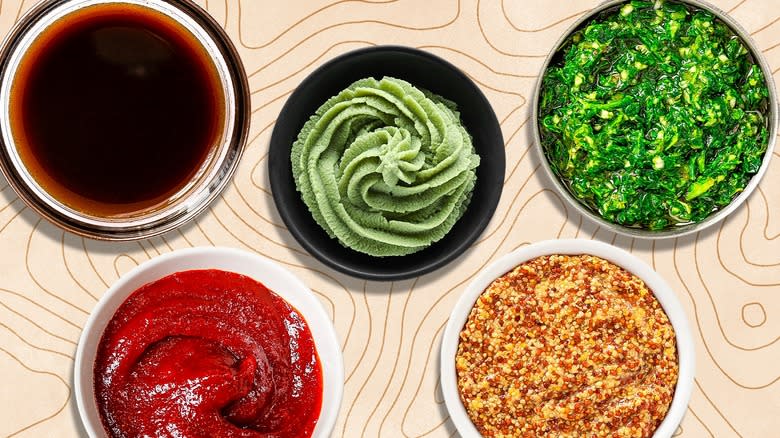
It's hard to nail down a precise definition to determine what is a condiment — dictionaries describe it as something to season or give flavor to food, but there's also some gray area between where condiments end and ingredients begin. What's clear is that condiments are an integral part of the culinary experience, which is why they're so abundant around the globe. On average, condiments are on the understated side in the U.S., but delving into international condiments opens a whole new world (pun intended) of flavors that can enhance our favorite meals or inspire us to try delicious new foods.
We couldn't possibly list all of the condiments used around the world that are worth trying. Besides being incredibly long, the list would include some that require special local ingredients or must be made by hand. Instead, we've come up with a selection of some of the most popular international condiments that are available in the United States. Try a few that you're not familiar with — learning new recipes that pair well with them could be a fun way to add global dishes to your repertoire. And if you're not a fan of cooking, these can be used in creative ways to dress or flavor ready-made meals.
Read more: 25 Most Popular Snacks In America Ranked Worst To Best
Worcestershire Sauce
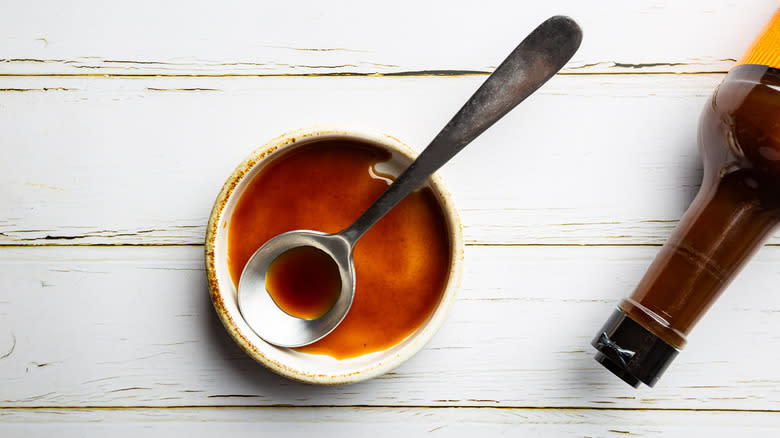
This well-known English sauce was created as a mistake in Worcester, England when two chemists attempted to recreate an Indian fish sauce before abandoning the mixture in a barrel in a cellar. When they came upon it months later, they realized that the aging process had made it delicious, and a new international cuisine was born.
Made with vinegar, molasses, tamarind, anchovies, and spices, it is aged for two years in barrels. Worcestershire sauce has become popular all over the world as a versatile condiment that adds a deep umami flavor to dishes. Ways to use Worcestershire sauce include incorporating it in salad dressings, soups and marinades, dressing vegetables, eggs, cheesy baked dishes, burgers, meat, and fish.
Datu Puti Vinegar

Datu Puti is a condiment brand created in 1975 and manufactured by NutriAsia, whose offerings are not only important staples in the Philippines but sold around the world as well. There are many varieties of vinegar that are very important in the Filipino kitchen, including white vinegar, fermented vinegar, and spicy versions. These are easily accessible in the Philippines but harder to find abroad. Datu Puti's offerings are the easiest to find in the U.S. This brand sells white vinegar made from sugarcane juice, including spiced vinegar that includes chili pepper, ginger, garlic, and other ingredients, which, besides being tart, is also quite hot.
Try it in dipping sauces, salad dressings, marinades, and pickled vegetables. Besides its use as a condiment and an actual ingredient in cooking, Filipino vinegar is also used as a home remedy and cold medicine.
Wasabi
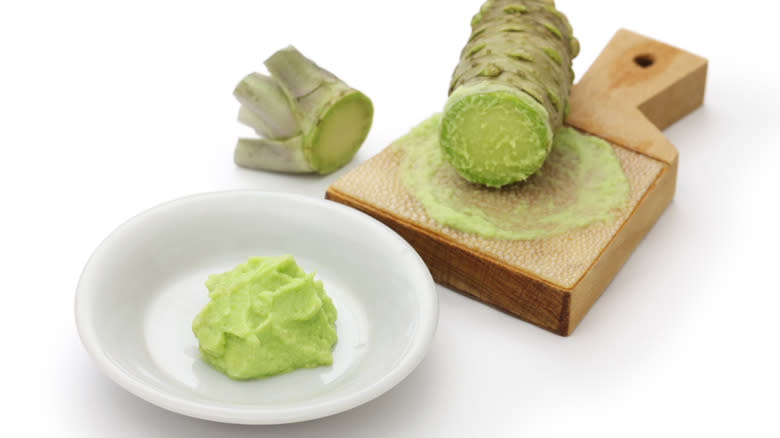
Sushi lovers are familiar with wasabi, the green paste that, along with soy sauce and pickled ginger, is served with raw fish in Japanese restaurants. There's a reason only a small amount of wasabi is served — a little goes a long way — it's one of the strongest condiments out there. If you've ever eaten too much wasabi at once, you're not likely to forget the painful sensation in your sinuses.
Wasabi is a rhizome like ginger and turmeric. Because it's hard to cultivate and only grows in certain areas, mostly in Japan, the real thing carries a hefty price tag, and wasabi that's not in powdered form must be eaten right after it's grated. That's why most wasabi we see in the U.S. is actually made with a horseradish mixture and green food coloring. Either way, it's worth keeping in the pantry, not just for sushi but for soups, sandwiches, and noodle dishes, too.
Chimichurri
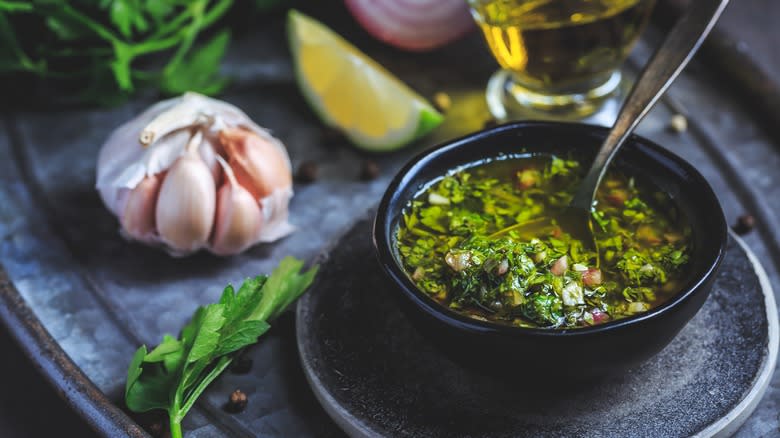
Chimichurri is a bright, herby, and spicy green sauce from Argentina and Uruguay that is easily available in many parts of the U.S. It can be found in supermarkets and also made at home in a blender. The base of the sauce and the color come from fresh parsley, and other ingredients include vinegar, chili peppers, garlic, lemon juice, olive oil, and spices.
It's a loose, oily, and vibrant green condiment traditionally used to dress grilled beef, called churrasco, but there's no reason to stop there. It's excellent on any kind of grilled or roasted meat or fish, in tacos, as a marinade, spread on bread, or as a dipping sauce for empanadas and other foods. And if that weren't enough, chimichurri is a versatile salad dressing and works well as a dressing for roasted vegetables.
Mustard
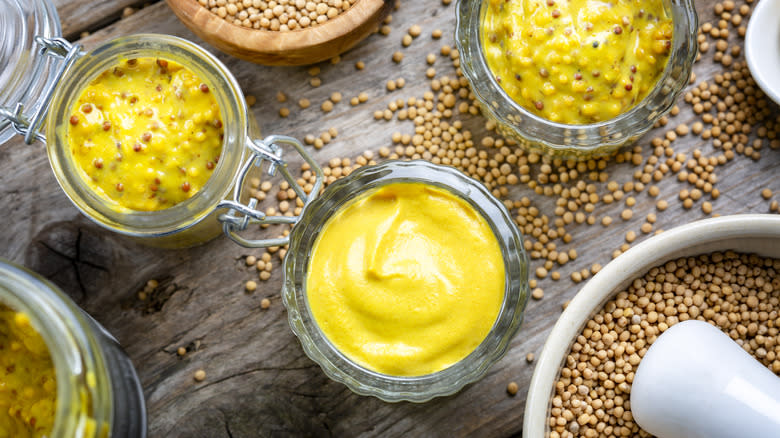
Mustard is a condiment that many Americans are already familiar with. In fact, Statista projects that 293 million Americans will use mustard in 2024. But we're not just talking about the yellow mustard seen on hot dogs and hamburgers. International mustards are used in countries around the globe and can enhance your culinary experience with new flavors. French Dijon mustard is strong and pungent and easily available in the U.S. It comes from the wine region of Burgundy and includes white wine in the ingredients.
Mostarda is a type of Italian mustard based on how it's made in Cremona, Northern Italy. The recipe combines mustard extract and cooked fruit syrup, and this sweet and spicy condiment is perfect for elevating your cheese board. Another notable variety is Chinese hot mustard. You can buy it already prepared or mix Chinese hot mustard powder with water yourself. Be careful because this mustard really packs the heat.
Gochujang
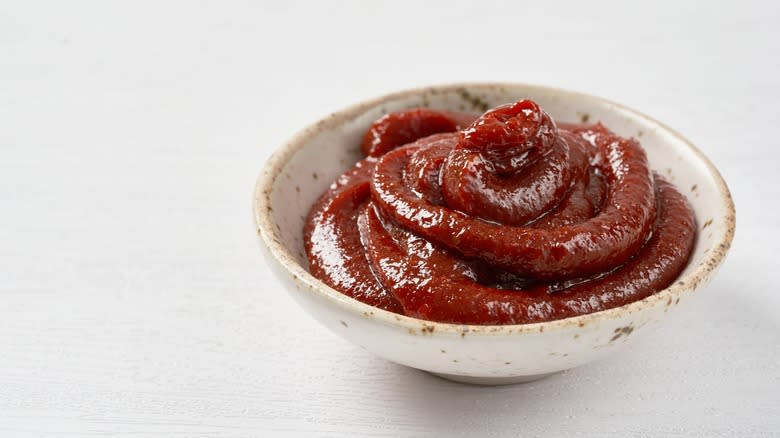
Gochujang is a fermented, red chili paste condiment that is popular in Korean cuisine. Made with ingredients like chili peppers, sweet glutenous rice flour (called chapssal), fermented soybean powder, and salt, it has a red color and a thick consistency. Gochujang has a complex flavor with hints of sweetness, spiciness, and saltiness, and it's the fermentation that gives it its deep umami flavor. The process can take months or years. The heat will vary depending on the type of chilies used, and the sweetness, which comes from the chapssal and the fermentation, can also vary.
Gochujang is versatile and can be used both as a condiment and as an ingredient in recipes. Many Korean recipes, like tofu, marinades, meats, and stews, rely on gochujang. Try using it in a sauce to serve with noodles, rubbing it on meat before frying, grilling, or broiling, or adding it to dipping sauces or dressings.
Tahini
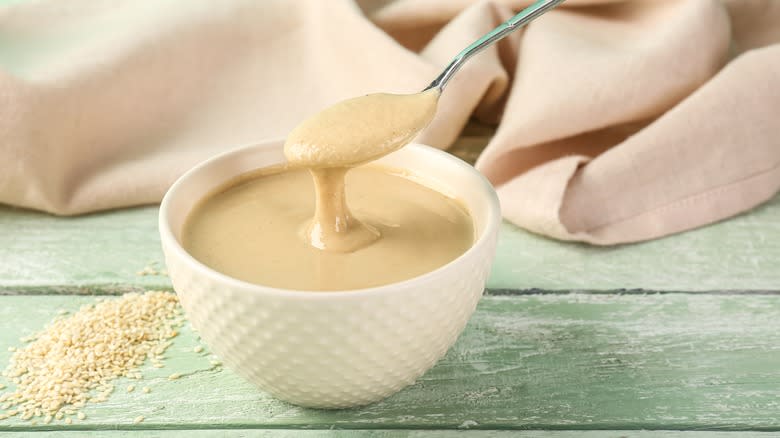
Tahini is a paste made from toasted and ground sesame seeds. It's a staple in Middle Eastern, North African, and some Mediterranean cuisines, and it's easily found in the U.S. as well as in other parts of the world. Tahini is high in fat and protein. It adds creaminess and a nutty flavor to dishes. One of the most well-known is hummus, where tahini is an indispensable ingredient responsible for the deeper flavor and thicker consistency of this popular spread.
Tahini can be mixed with lemon juice, water, garlic, and salt to make a dressing for falafel, burgers, salads, and bread. It can also be used in sweet recipes like cookies and halva, a Middle Eastern dessert that gets its basic flavor from tahini, sugar, and vanilla. Consider the many types of tahini because hulled or unhulled and raw or roasted tahini all have differences in flavor.
Sriracha
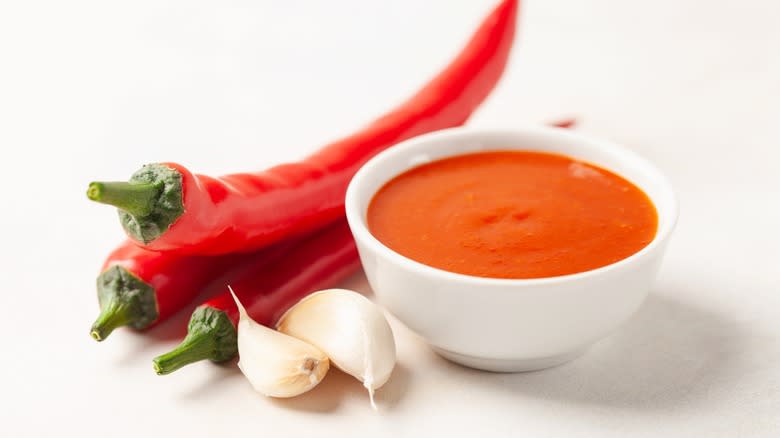
Sriracha is a chili sauce originating in Thailand that has exploded in popularity in the U.S. in recent years. Part of this is because of distribution by a Vietnamese-American company, Huy Fong Foods, whose product is recognizable by the rooster on the label. While that may be the easiest to find, you can find international brands (Three Mountains Brand is one) selling sriracha by checking the labels in the supermarket. Or, look in specialty stores or online.
The flavor of sriracha is spicy and complex, with heat coming from chili peppers and tangy, garlicky, and sweet notes from the other ingredients. It's different from hot sauce because it has a thicker consistency. Sriracha is versatile and can be used with almost anything you want to add flavor and heat to. Mix it in sauces and dressings, add it to noodles or soups, or drizzle it on meat.
Tapenade
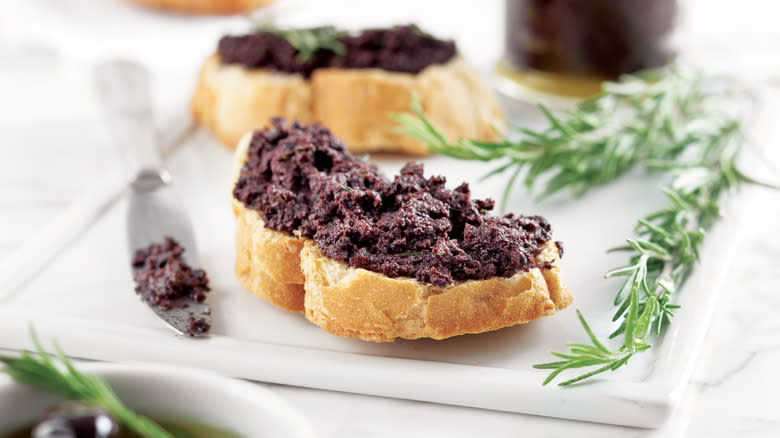
By tapenade, we mean the delicious Provençal olive paste made by crushing black olives and capers and mixing them with olive oil. That's the basic recipe, but it's often mixed with other ingredients like anchovies, garlic, and herbs as well. While olives are the main ingredient, the name comes from tapenas, the Provençal word for capers, because it wouldn't be tapenade without them. Tapenade is popular in Italy and Greece and olive paste recipes are actually found in ancient Roman cookbooks, so while it's well known in Provence, it's probably not French in origin.
Tapenade made with high-quality ingredients is not to be missed. But what can you do with it? A classic way to enjoy it is spread on toasted slices of baguette. You can use it as a dip or spread, mix it in dressings or sauces, or try your hand at making Provençal roast chicken with tapenade stuffed under the skin.
Aceto Balsamico Di Modena
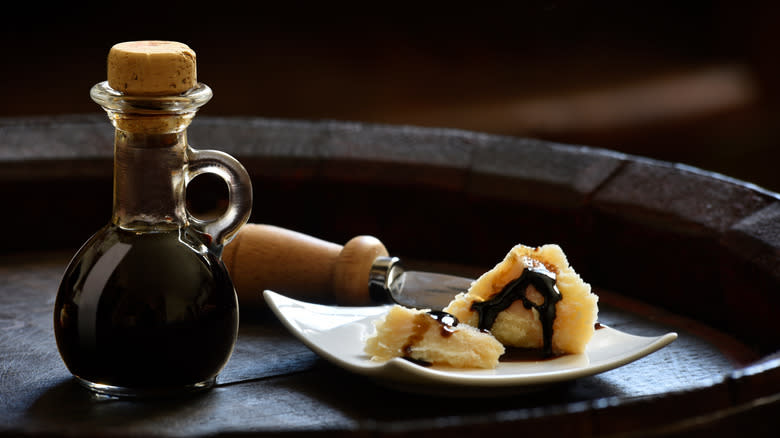
Aceto balsamico, or balsamic vinegar from Modena, is the gold standard of vinegar and one of the many artisanal products that Italy produces. The production requirements are very specific. It's made from partially fermented grape must, derived from 7 local grape vines only, which is mixed with wine vinegar and a quantity of vinegar that's at least 10 years old. The ingredients, weights, cooking temperatures, acidity levels, and aging process (it can be aged for up to 25 years) must conform to precise specifications in order to receive the Protected Designation of Origin (PDO) certification.
If you can taste the real deal, the delicate sweet and sour flavors and woodsy notes are unlike anything else. Industrial balsamic vinegar from Modena, certified as PGI (protected geographical indication), is more widely available. Either way, this product adds a delicious final touch to risotto, desserts, cheese, fruit, salad, grilled meat, and even ice cream.
Ponzu Sauce
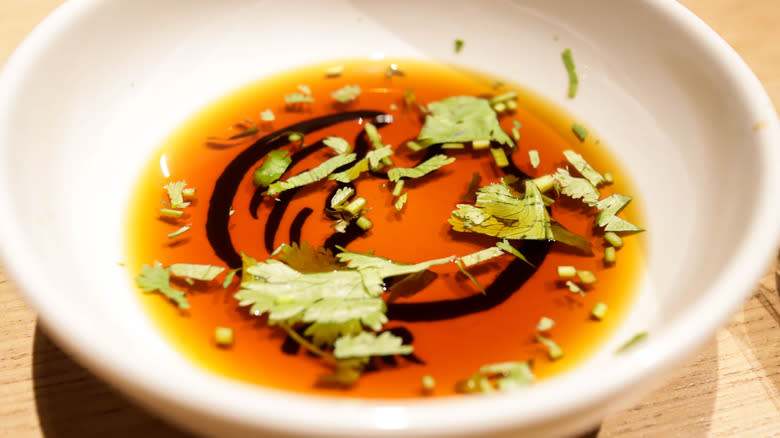
The Japanese condiment ponzu sauce is similar to soy sauce, but it has a lighter and brighter flavor that enhances the dipping experience. It's brighter because it contains citrus juice, sweeter from the addition of mirin, a sweet rice wine, and more tangy from rice vinegar (in fact, ponzu means vinegar punch in Japanese). Ponzu is served in small rectangular trays at Japanese restaurants, and you can recognize it because it has a lighter color and a thinner consistency than soy sauce.
Ponzu is a lovely dipping sauce for dumplings, sushi, sashimi, tempura, and vegetables. It's also delicious as a marinade for meats and as an addition to salad dressing. You can use it as an ingredient in soups or stir-fries by adding a little at the end to enhance the flavor or sprinkle some on a rice bowl or ramen after it's served.
Hoisin Sauce
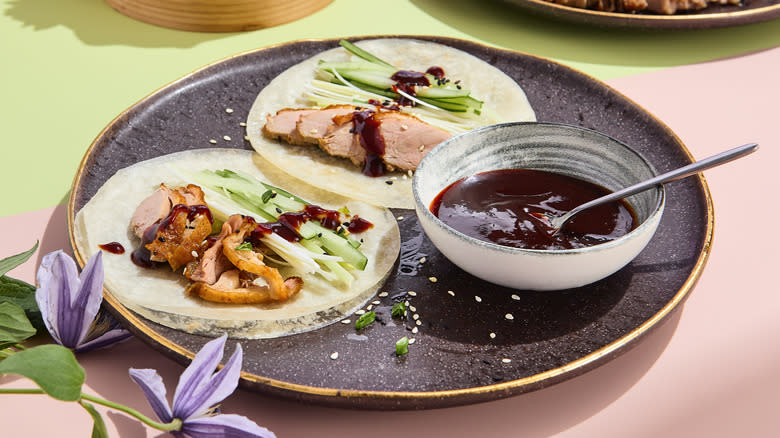
Hoisin is a dark, thick, and pungent Cantonese sweet-and-sour sauce that resembles barbecue sauce. In fact, it's often informally called Chinese barbecue sauce. The word hoisin means seafood, but the sauce doesn't contain any actual seafood. Ingredients include fermented soybeans, vinegar, garlic, sugar, and sometimes a touch of hot pepper. It tastes sweet, salty, and tangy, with a deep umami flavor.
Adding hoisin sauce can transform your dish, but be conservative if you haven't had it before. It can take over the dish if you use too much. Hoisin sauce makes a delicious dipping sauce for Chinese foods like dumplings, spring rolls, egg rolls, and other finger foods. It's often used in marinades, spread on meat or tofu before cooking or added to noodles and stir-fries. It can even be added to mayonnaise or dressings for a surprising flavor.
Doubanjiang
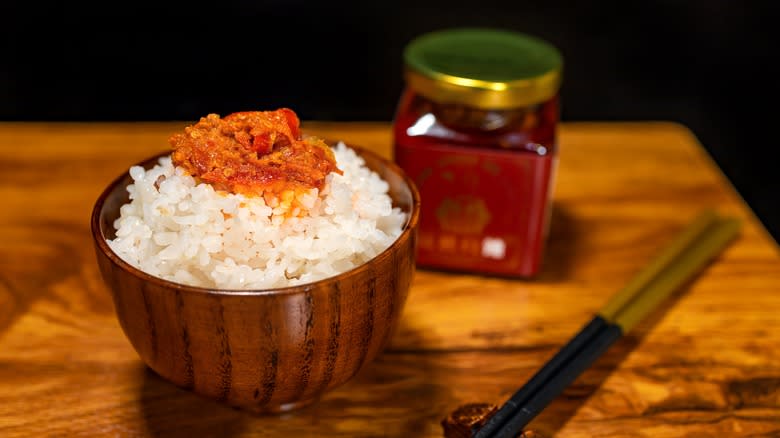
The Chinese staple doubanjiang, often referred to as the soul of Sichuan cooking, is a spicy broad bean paste hailing from Pixian, a town in the Chinese province of Sichuan. The dark reddish brown color comes from fermented broad beans, which are traditionally left out in direct sunlight. Longer fermentation produces a deeper umami flavor and a darker color. The textured paste also includes chili peppers, salt, and sometimes soybeans, rice, or wheat flour.
Since it's concentrated, Doubanjiang is very salty. Sichuan cooking is known for being very spicy, and this sauce is no exception. If you're not a fan of heat, you can find doubanjiang versions made without the chili peppers. Add doubanjiang to heated oil in the early stages of cooking stir-fries, meat, and vegetables. You can also include it in marinades and soups.
Chutney
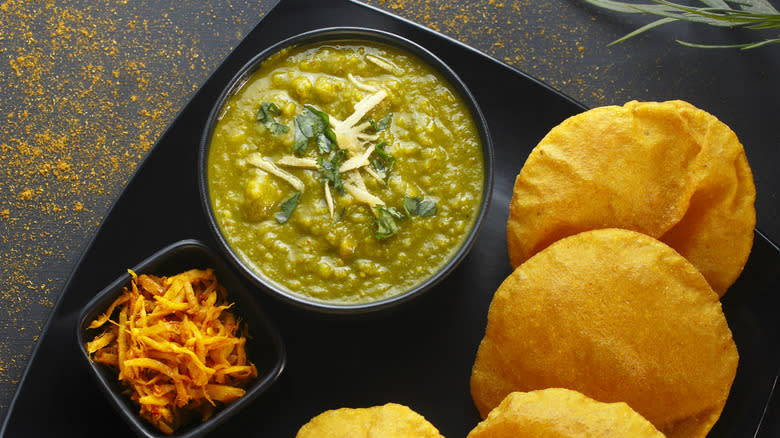
Chutney is an Indian condiment that could be described as similar to jam. Made from a mixture of fruit, sugar, vinegar, and other ingredients like spices, chutney has a chunky texture and a mix of savory, sweet, spicy, and tangy flavors. Chutney is an integral part of Indian cuisine and complements a large variety of dishes, and it's also well-known around the world.
There are infinite versions of this delicious condiment. Common ingredients include peach, apricot, mango, pineapple, citrus fruits, pumpkin, tamarind, coriander, nutmeg, cinnamon, ginger, and garlic. Chutney is traditionally served with Indian dishes like basmati rice and curry. It's also delicious with roasted meat and cheese. Chutney pairs perfectly with robust, savory dishes like vindaloo and korma because the sweetness and acidity of the condiment complements bold, umami-rich entrees.
Yuzu Kosho
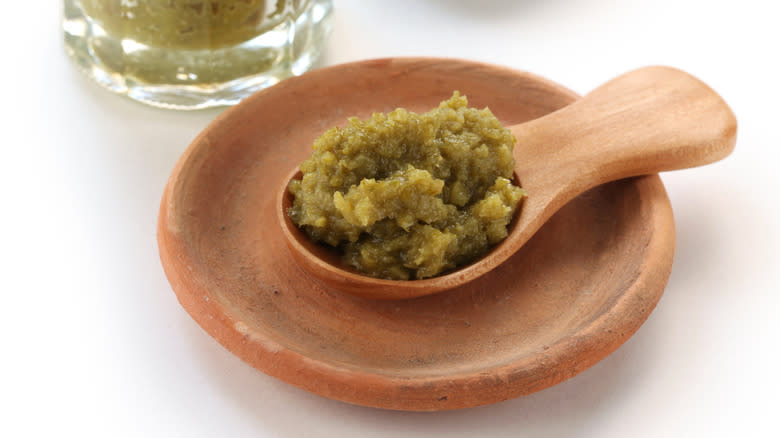
If you're not familiar with it, yuzu kosho is a Japanese condiment that can elevate almost any dish. Japanese cuisine is famous for its umami flavors, and this fermented sauce highlights that deep umami taste. Yuzu kosho gets its name from a local citrus fruit called yuzu, the zest of which is used in the sauce. It also contains chili peppers and salt. This bright, tangy, and spicy sauce is a staple in Japan, and it has also become appreciated around the globe.
Traditional uses are in miso soup, sashimi, nabemono (Japanese hot pot soups), ramen, and udon. If you want to branch out, try this bright fermented sauce on fried or grilled meat and fish or on roasted vegetables. You can also include it in marinades, dips, and dressings.
Miso
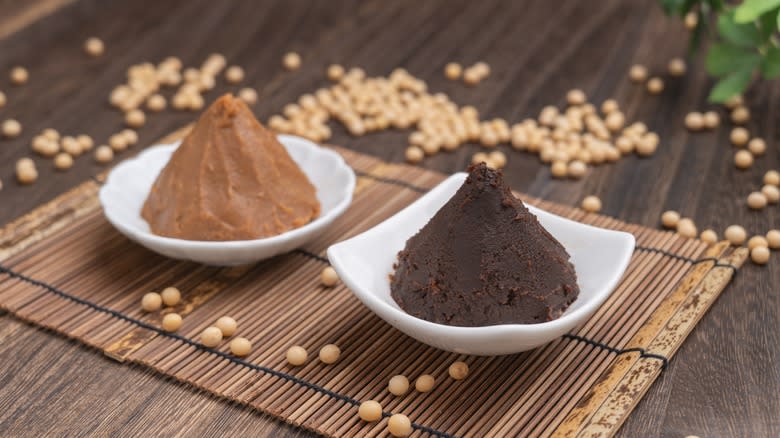
Miso paste is an ancient Japanese condiment made from soybeans, koji, and salt that comes in countless varieties and colors. Koji plays an important role in Japanese fermented foods. It is steamed rice or another grain, or sometimes a bean, that contains a specific mold called Aspergillus oryzae, which is responsible for fermenting the mixture. Where it is used, miso adds an umami flavor. Some miso is sweeter, and these have a lighter color. Salty miso, on the other hand, has a dark color.
This international condiment is commonly used in soups and sauces. Miso soup is one such dish that's well-known across the globe. Miso is delicious with meat and fish or in broth and salad dressings, an it can be used in the pickling liquid when preserving vegetables and even in salty desserts like miso caramel cake.
Harissa
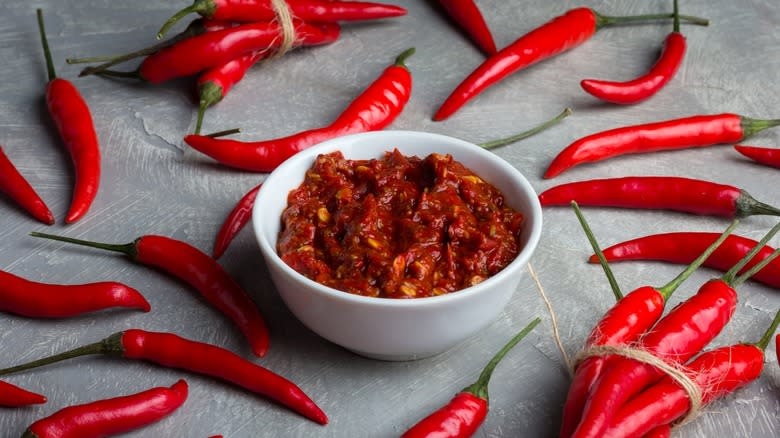
Harissa, a spicy roasted hot pepper paste, is a staple of North African cuisine. Roasted red peppers as well as hot Baklouti peppers make up the base. Additional ingredients include olive oil, garlic, and spices like coriander, cumin, or caraway seeds. It's similar to hot sauce but has a more complex flavor from the spices.
There are many ways to use this spicy red condiment. It's often used in stews containing meat or fish. It be added to marinades or used in a sauce to spread on grilled or roasted meat, fish, and seafood. One well-known sauce is Moroccan chermoula, the red version of which features harissa. This paste can be made into mayonnaise, yogurt, and hummus dips for pita bread or raw or roasted vegetables. You can even add it to scrambled eggs for a fiery kick.
Aioli
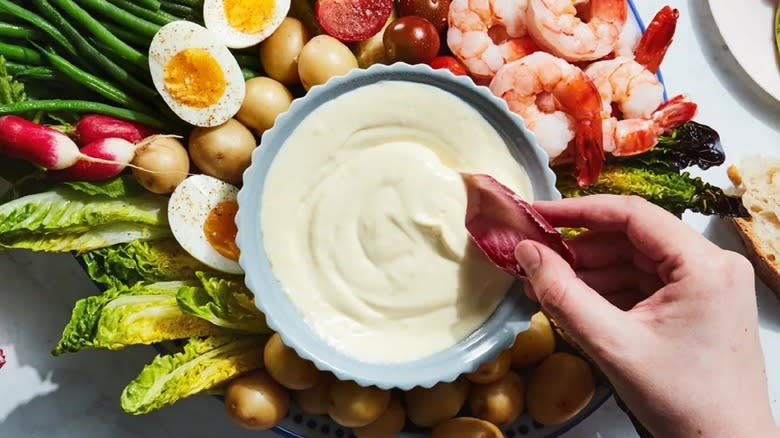
Aioli is a thick white mayonnaise-based condiment that hails from the Mediterranean, and some say this popular sauce makes everything taste better. It contains egg yolk, extra virgin olive oil, garlic, salt, and sometimes lemon juice and mustard. Aioli is creamy and very flavorful, and the garlic takes it up more than a notch from plain mayonnaise. This is an ancient sauce, described by Roman historian Pliny, the Elder, as it was made in Catalonia in Spain, but it's not clear where its origins lie.
Today it's very popular in France, notably in the tradition of le grand aioli, a large platter of vegetables and seafood served with aioli for dipping. Aioli can complement many foods and help them taste better. Try it as a dip for French fries or vegetables, serve it alongside Mediterranean platters, or drizzle it onto potatoes, burgers, fish, tacos, roasted vegetables, and wings.
Salsa
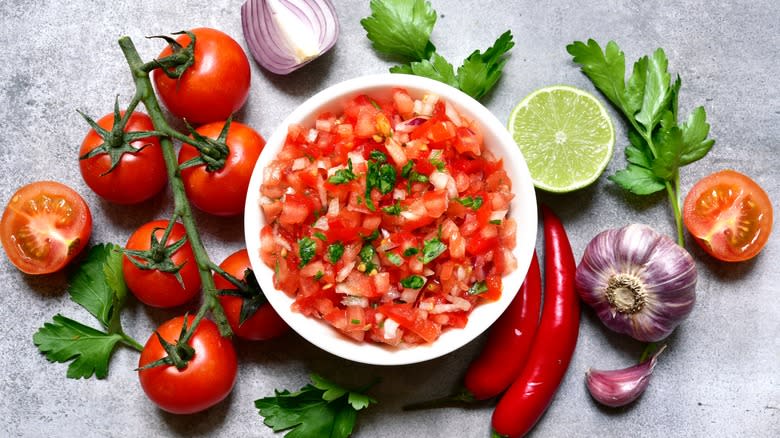
This may come as a surprise to some, but salsa is good for so much more than just scooping up in tortilla chips. While it's primarily used as a dip in the U.S., it's a widespread and versatile condiment in Latin America. In some countries, a container of salsa graces the table at every meal, and it's spooned freely onto many types of dishes. There are many types of salsa, with chunky or smooth textures and consistencies ranging from thick to liquidy. These variations make it ideal for enhancing almost everything.
Put the chips aside (or just save them for later), and try some salsa on top of tacos, fajitas, and enchiladas; add it to soup or stew after it's served; spoon some on your eggs and potatoes; or spread it on meat like chorizo, chicken, and pork.
Read the original article on Tasting Table.

